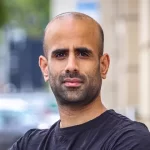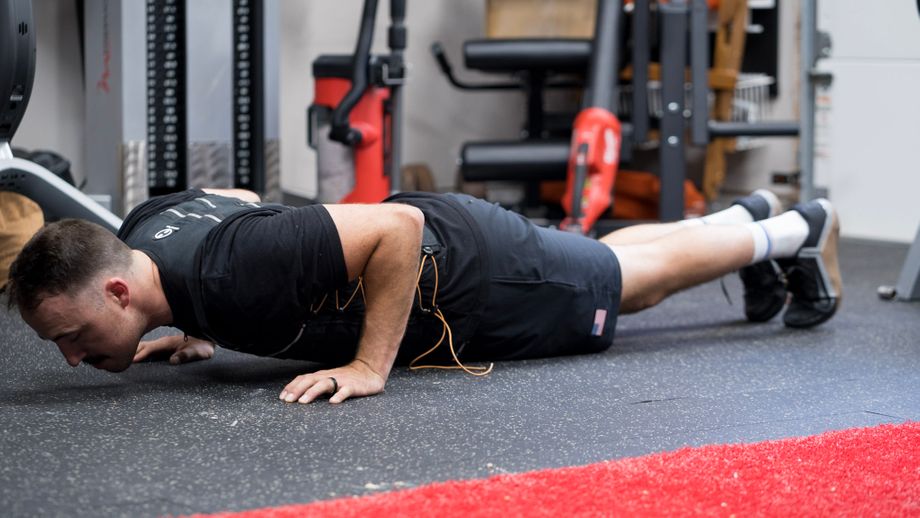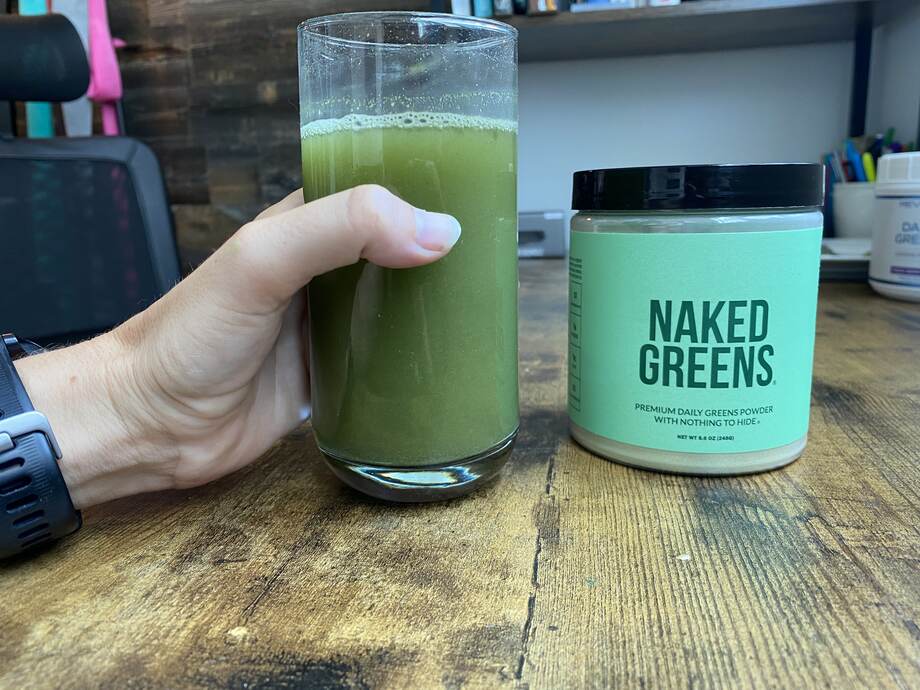When you look at any list of the best back exercises, one thing is certain—pull-ups will be on it. I appreciate that there are several other great exercises for the back, but for me, pull-ups are the one move to rule them all. They’re popular in the bodybuilding and calisthenics worlds and featured in many gymnastics workout routines.
If you’re a regular gym-goer (commercial or home) who wants to progress their bodyweight pull-ups, you’ve come to the right place. The focus of my expert guide is weighted pull-ups. Adding weight to your pull-ups can help you build strength and size in your back and biceps and improve your grip strength. Weighted pull-ups also require less equipment than other back exercises.
RELATED: 30-Day Pull-Up Progression Plan
I’ll begin by explaining how to do weighted pull-ups with proper form before getting into modifications and variations. Next, I’ll describe five alternatives to weighted pull-ups, should you need them. To finish, I’ll talk about the benefits of doing pull-ups with additional weight and common mistakes to avoid. Let’s begin.
How To Do Weighted Pull-Ups
First, you’ll need a pull-up bar and then a dip belt or weighted vest to perform weighted pull-ups. Some lifters will place a dumbbell between their feet to do the exercise, but personally, I don’t find this comfortable. It’s important to note that you should use your back and not your biceps to lift yourself.
How to do it:
- Fasten a dip belt with the required amount of weight around your waist. (Alternatively, you can wear one of the best weighted vests.)
- Stand underneath a pull-up bar.
- Grab the handles or bar with a wide, overhand grip (palms facing away from you).
- Enter the dead hang position by lifting your feet off the floor or taking them off a platform.
- Lift your chest up, engage your core, and keep your head neutral.
- Pull yourself up using your back muscles. Keep going until your chin clears the bar.
- Hold momentarily, then slowly lower yourself back down to the starting position.
- Continue for the desired number of repetitions, then rest and repeat the set.
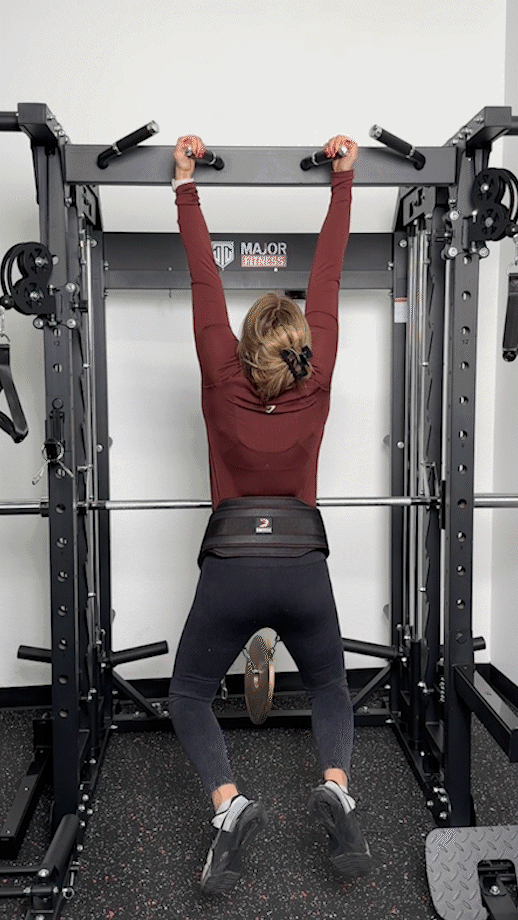
Modifications
- Dial it back: Reduce the weight or do bodyweight pull-ups. You can also try negative weighted pull-ups, where you only perform the exercise’s eccentric (or lowering) phase.
- Make it harder: Increase the reps or load. Alternatively, hold the top position longer, slow the lowering phase, or try some of our weighted pull-up variations below.
How To Do Weighted Pull-Ups At Home
You’ll need one of the best pull-up bars to do weighted pull-ups at home. If this isn’t an option, don’t stress—I’ve described weighted pull-up alternatives below. For those who don’t have a weight belt or weighted vest, place any heavy household object (think laundry detergent or cans of food) between your feet.

Weighted Pull-Up Variations
- Weighted chin-up: Instead of holding the bar or handles with a wide, overhand grip, use a close, underhand grip (palms facing toward you). This places more emphasis on the biceps. For most people, chin-ups are slightly easier than pull-ups, and our guide to the chin-up vs. pull-up describes more similarities and differences.
- Suspended pull-up: You’ll use a TRX suspension system instead of a pull-up bar. Place the handles high (close to the ceiling), grab them, and pull yourself up. Because a TRX suspension system is less stable than a pull-up bar, this exercise is more challenging than regular pull-ups.
- Neutral-grip pull-up: You’ve seen the overhand grip with pull-ups and the underhand grip with chin-ups. The neutral grip is a hybrid between the two because your palms face each other. This may place less stress on your shoulder joints and wrists.

Weighted Pull-Up Alternatives
As a certified personal trainer, I love weighted pull-ups. They’re one of the best exercises for building muscle in your upper back and biceps. However, they’re notoriously difficult. Not to worry, you can get similar results with other back exercises. Here are five weighted pull-up alternatives that I suggest to clients:
Lat Pulldown
Why do it: We have an entire guide on the lat pulldown vs. pull-up, but the main benefit of lat pulldowns over weighted pull-ups is that the former is more beginner-friendly.
How to do it:
- Select your desired weight and attachment (the most popular attachment is the straight bar).
- Hold the bar with a wide, overhand grip (palms facing away from you).
- Sit down on the machine’s seat or floor. If you’re using a lat pulldown machine, place your quads securely underneath the pads.
- Lean back slightly. Then, lift your chest up and retract your shoulder blades.
- Pull the attachment toward your upper chest, then pause.
- Reverse the motion in a controlled manner.
- Repeat for reps.
Expert tip: I’ve described the wide, overhand grip lat pulldown using a straight bar because it’s the closest movement pattern to pull-ups, but there are other attachments and grips to try. For example, you can use a V-bar with a neutral grip, a longer bar with a closer, underhand grip, or a shorter bar with an overhand grip.
A 2002 Journal of Strength and Conditioning Research1 study found that the wide-grip hand position best activates the latissimus dorsi, whereas close-grip lat pulldowns are a fantastic rear delt exercise.

Inverted Row
Why do it: I love inverted rows because they’re a bodyweight exercise you can do anywhere. Further, a 2016 Journal of Strength and Conditioning Research2 study found that inverted row exercises activated the latissimus dorsi, upper trapezius, middle trapezius, lower trapezius, and biceps brachii at “levels conducive to strengthening.”
How to do it:
- Adjust the J-hooks on a squat or power rack so the bar is at hip height. Alternatively, you can use a Smith machine.
- Sit down on the floor with the bar above your head. You’ll want your knees bent and your feet flat on the ground.
- Grasp the bar with a wide, overhand grip (palms facing away from you). Your arms should be extended and perpendicular to the bar.
- Walk your feet out so that you’re looking at the ceiling. There should be a straight line between your head and toes.
- Activate your core muscles before pulling your chest toward the bar.
- Pause momentarily, then lower yourself to the original position.
- Repeat for reps.

Renegade Row
Why do it: Knowing how to do a renegade row has two main benefits. First, unlike weighted pull-ups, you work each side of the body separately. This can help to correct muscular imbalances. Also, because you start in the plank position, you activate your core muscles to a greater degree than with pull-ups.
How to do it:
- Begin in the plank position (aka the push-up position). Your hands should be shoulder-width apart, but instead of your palms being on the floor, you’ll grip a pair of dumbbells in your hands.
- Adjust your feet so they’re slightly wider apart than shoulder-width to help with stability.
- Engage your core and squeeze your glutes.
- Row the dumbbell in your left hand toward your left hip. Your right hand should stay fixed on the floor, and you’ll want to avoid rotating your torso excessively.
- Lower the dumbbell in your left hand back to the ground.
- Repeat the movement on the opposite side, rowing the dumbbell in your right hand toward your right hip.
- Repeat for the desired number of reps, alternating sides each time.
RELATED: Unilateral Exercises

Deadlift
Why do it: Although conventional deadlifts don’t hit your upper back and biceps to the same extent as weighted pull-ups, they still work both muscle groups. Deadlifts activate your glutes, hamstrings, quads, and lower back. They’re a full-body exercise, and you’ll likely be able to add some serious load to the bar.
How to do it:
- Place a loaded Olympic barbell on the ground.
- Step underneath the bar with your feet positioned hip-width apart. You’ll want the barbell to be covering your shoelaces.
- Squat down to take hold of the bar with either an overhand grip (palms facing away from you) or a mixed grip. Your hands should be outside of your shins.
- Lift your chest up, keep your head neutral, and brace your core.
- Drive through your heels to lift the bar off the ground.
- Continue lifting the bar, keeping it close to your body. As you stand, drive your hips forward and squeeze your glutes.
- Return the bar to the floor by pushing your hips back and bending your knees.
- Repeat for reps.
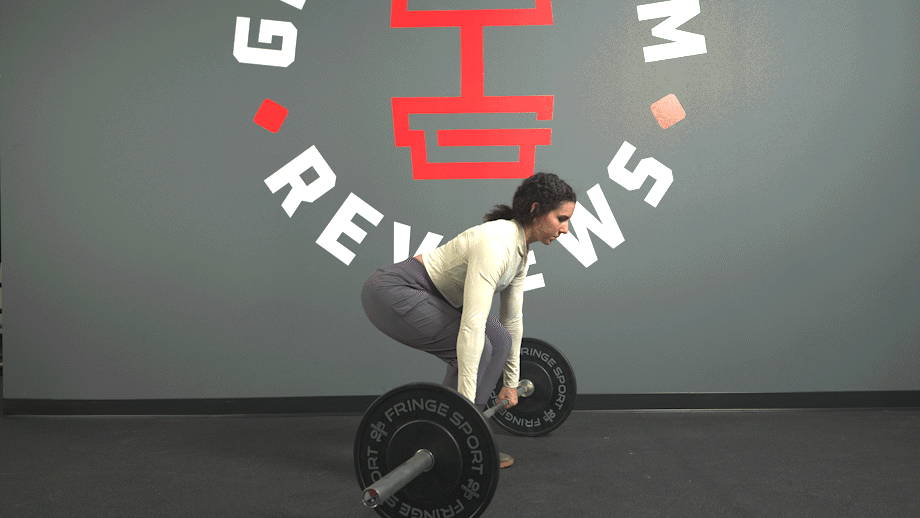
One-Arm Pull-Up
Why do it: Now for an alternative that can elevate your push-up prowess. We included one-arm pull-ups in our pull-up variations guide, and as the name suggests, it’s a progression of regular or even weighted pull-ups. If weighted pull-ups are too easy, or you don’t have enough weight to add, try doing them with one arm. Similar to renegade rows above, you’ll also fix muscular imbalances because you’re training each side separately.
How to do it:
- Begin in the dead hang position, similar to how you would with regular pull-ups. You should be holding the bar or handles with a wide, overhand grip (palms facing away from you).
- Take your right hand off the pull-up bar and place it on your left wrist. You’ll need to rotate your body to the left slightly.
- Lift your chest up, activate your core, and keep your head neutral.
- Pull yourself up toward the bar using your back and left arm. Keep going until your chin clears the bar.
- Lower yourself slowly back down to the bottom position.
- Continue for reps.
- Repeat the exercise with your left hand placed on your right wrist.

Benefits Of Weighted Pull-Ups
Why should you include weighted pull-ups in your upper-body workout? This back exercise can build muscle in the back and biceps, help improve grip strength, and doesn’t require as much equipment as other exercises. Allow me to elaborate:
Hypertrophy of the Back And Biceps
As discussed in our guide on how many reps to build muscle, the optimal rep range for muscle growth is between six and 12. Once you can do multiple sets of bodyweight pull-ups in this rep range, it’s time to step it up. There are other progressions for regular pull-ups, but weighted pull-ups are the most common in bodybuilding. Performing pull-ups with added weight is a major size and strength builder.
Helps Improve Grip Strength
Improved grip strength is another benefit of doing pull-ups with additional weight. Because weighted pull-ups require serious upper body strength, you’ll need a solid grip throughout. TThis helps with other weightlifting exercises and makes everyday tasks more manageable (for example, carrying your groceries up a flight of stairs). A 2016 Shoulder Elbow3 experimental study found that “assessment of grip strength could be used as a rotator cuff monitor of recruitment function.”

You Don’t Need As Much Equipment
Compared to other back exercises, weighted pull-ups require less equipment. Yes, you’ll need a pull-up bar and a way to add extra weight, but both can be purchased relatively inexpensively. More importantly, you don’t need a squat or power rack and a barbell loaded with weight plates. You might even find that your local park has a pull-up bar that you can use for free!
Common Weighted Pull-Up Mistakes
It’s perfectly normal for beginners or those new to weighted pull-ups to make mistakes. I’ve been there myself, and so have my clients. Here are three common mistakes I see and how you can avoid them:
Adding Too Much Weight
When progressing from bodyweight pull-ups to weighted pull-ups, start small. Add five or 10 pounds to start and see how you do. You can then use progressive overload to increase the demands on your body over time. You don’t want to add too much weight and compromise your form. The mind-muscle connection4 still has to be the focus.
Not Doing The Full Range Of Motion
Your chin should clear the bar at the top of a weighted pull-up. At the bottom, extend your arms in the dead hang position. If you’re not able to do this, you likely need to reduce the weight (or not use any weight at all). Not doing the full range of motion will reduce your muscles’ time under tension (TUT), and you may miss out on potential gains.
Swinging Around Excessively
I’ve seen gym-goers attempt weighted pull-ups by swinging around excessively. Usually, they use their lower body to create momentum to get to the top of the bar. The perfect pull-up relies on just your back and biceps. Being strict with your form helps to avoid injuries and hit the correct muscles.
Muscles Worked by Pull-Ups
If you’re wondering “What muscles do pull-ups work?”, the answer is a lot. However, the main muscle groups activated are the lats, biceps, rhomboids, and traps.
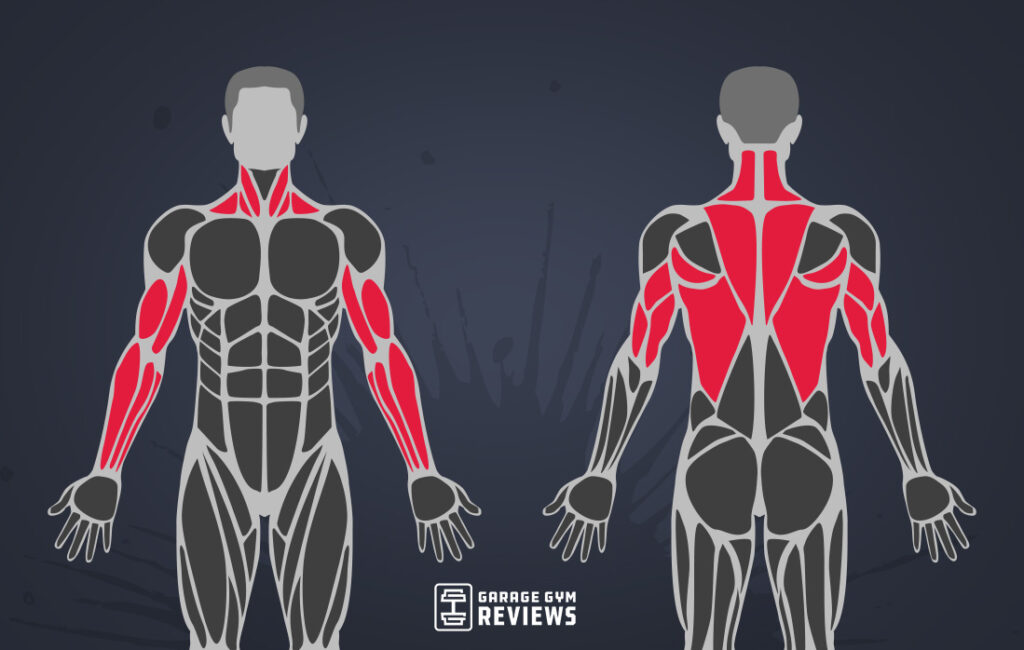
Here’s a quick breakdown:
- Latissimus dorsi: The latissimus dorsi works collaboratively with the teres major and pectoralis major to adduct, medially rotate, and extend the arm at the glenohumeral joint5.
- Biceps brachii: The biceps brachii muscle is a forearm flexor when extended but becomes the forearm’s most powerful supinator when flexed6.
- Rhomboids: The rhomboids are an important part of upper limb movement and the stability of the shoulder girdle and scapula7.
- Trapezius: The function of the trapezius is to stabilize and move the scapula8, allowing the scapula to rotate against the levator scapulae and the rhomboid muscles.
Weighted Pull-Ups: Final Thoughts
If you find bodyweight pull-ups are too easy, consider upgrading to weighted pull-ups. This strength training exercise can help build your back and biceps muscles and improve your grip strength. Compared to other back exercises, you don’t need as much equipment.
To get the proper form, start small when adding weight and perform the full range of motion.
Like any other resistance exercise, warm up before doing weighted pull-ups. Cardio and dynamic exercises help, but you’ll also want to perform light sets on a back exercise (think lat pulldowns or seated cable rows) before you begin.
Weighted Pull-Ups: FAQs
Are weighted pull-ups more effective?
If you’re at the stage where you find bodyweight pull-ups too easy, then yes, weighted pull-ups will be more effective. However, if you can’t do a set (or multiple sets) of bodyweight pull-ups, there’s no point in doing weighted pull-ups. You likely won’t be able to do them with the correct form, leading to potential injury.
Do weighted pull-ups help muscle ups?
The main reason why people can’t do muscle-ups is because they don’t have enough pulling strength. Weighted pull-ups develop pulling strength and, therefore, can help with muscle-ups. The more weight you add to your pull-ups, the more your explosive strength will grow, helping you get better at muscle-ups.
What is a good weight for weighted pull-ups?
A good weight for weighted pull-ups depends on your starting point. For those new to weighted pull-ups, I’d suggest adding five or 10 pounds to see how do. If this is too easy, add more weight. If you’ve been doing weighted pull-ups for a while, I’d say that 45 pounds is a solid weight.
References
- Signorile JF, Zink AJ, Szwed SP. A comparative electromyographical investigation of muscle utilization patterns using various hand positions during the lat pull-down. J Strength Cond Res. 2002 Nov;16(4):539-46. PMID: 12423182.
- Youdas JW, Keith JM, Nonn DE, Squires AC, Hollman JH. Activation of Spinal Stabilizers and Shoulder Complex Muscles During an Inverted Row Using a Portable Pull-up Device and Body Weight Resistance. J Strength Cond Res. 2016 Jul;30(7):1933-41. doi: 10.1519/JSC.0000000000001210. PMID: 26422610.
- Horsley I, Herrington L, Hoyle R, Prescott E, Bellamy N. Do changes in hand grip strength correlate with shoulder rotator cuff function? Shoulder Elbow. 2016 Apr;8(2):124-9. doi: 10.1177/1758573215626103. Epub 2016 Jan 25. PMID: 27583010; PMCID: PMC4950463.
- Calatayud J, Vinstrup J, Jakobsen MD, Sundstrup E, Brandt M, Jay K, Colado JC, Andersen LL. Importance of mind-muscle connection during progressive resistance training. Eur J Appl Physiol. 2016 Mar;116(3):527-33. doi: 10.1007/s00421-015-3305-7. Epub 2015 Dec 23. PMID: 26700744.
- Jeno SH, Varacallo M. Anatomy, Back, Latissimus Dorsi. [Updated 2023 Mar 5]. In: StatPearls [Internet]. Treasure Island (FL): StatPearls Publishing; 2024 Jan-. Available from: https://www.ncbi.nlm.nih.gov/books/NBK448120/
- Tiwana MS, Charlick M, Varacallo M. Anatomy, Shoulder and Upper Limb, Biceps Muscle. [Updated 2024 Jan 30]. In: StatPearls [Internet]. Treasure Island (FL): StatPearls Publishing; 2024 Jan-. Available from: https://www.ncbi.nlm.nih.gov/books/NBK519538/
- Farrell C, Kiel J. Anatomy, Back, Rhomboid Muscles. [Updated 2023 May 16]. In: StatPearls [Internet]. Treasure Island (FL): StatPearls Publishing; 2024 Jan-. Available from: https://www.ncbi.nlm.nih.gov/books/NBK534856/
- Ourieff J, Scheckel B, Agarwal A. Anatomy, Back, Trapezius. [Updated 2023 Mar 11]. In: StatPearls [Internet]. Treasure Island (FL): StatPearls Publishing; 2024 Jan-. Available from: https://www.ncbi.nlm.nih.gov/books/NBK518994/

